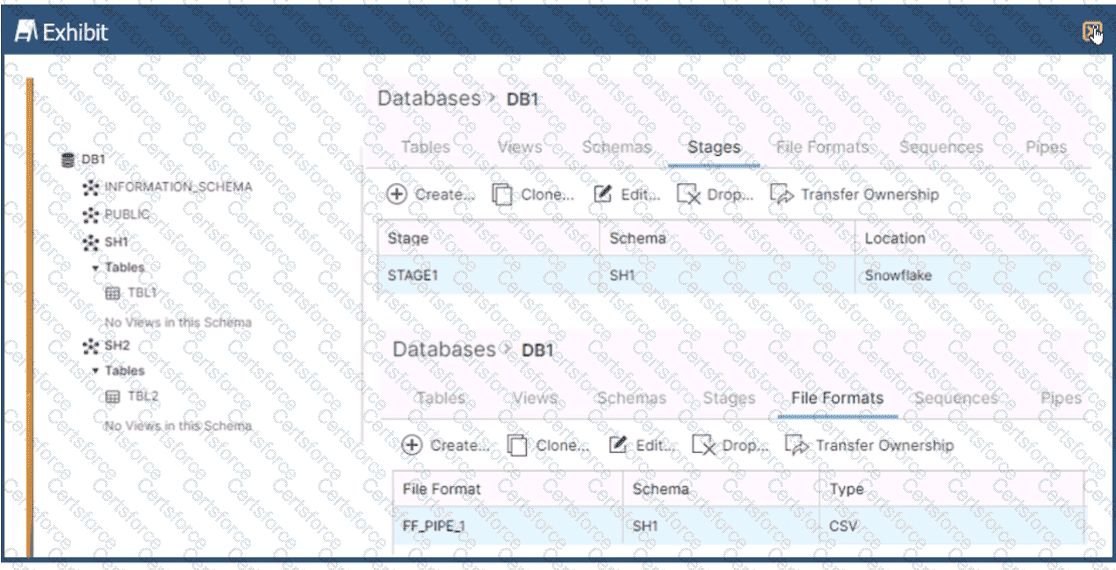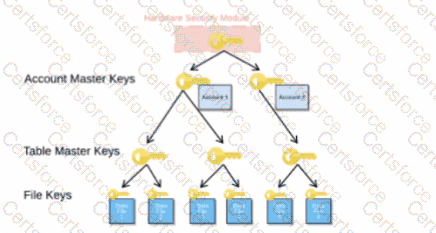A user has the appropriate privilege to see unmasked data in a column.
If the user loads this column data into another column that does not have a masking policy, what will occur?
Which of the below commands will use warehouse credits?
The following table exists in the production database:
A regulatory requirement states that the company must mask the username for events that are older than six months based on the current date when the data is queried.
How can the requirement be met without duplicating the event data and making sure it is applied when creating views using the table or cloning the table?
How do Snowflake databases that are created from shares differ from standard databases that are not created from shares? (Choose three.)

Based on the architecture in the image, how can the data from DB1 be copied into TBL2? (Select TWO).
A)

B)

C)

D)

E)

A Snowflake Architect created a new data share and would like to verify that only specific records in secure views are visible within the data share by the consumers.
What is the recommended way to validate data accessibility by the consumers?
A Snowflake Architect is designing a multi-tenant application strategy for an organization in the Snowflake Data Cloud and is considering using an Account Per Tenant strategy.
Which requirements will be addressed with this approach? (Choose two.)
An Architect needs to design a solution for building environments for development, test, and pre-production, all located in a single Snowflake account. The environments should be based on production data.
Which solution would be MOST cost-effective and performant?
When activating Tri-Secret Secure in a hierarchical encryption model in a Snowflake account, at what level is the customer-managed key used?

Which steps are recommended best practices for prioritizing cluster keys in Snowflake? (Choose two.)